It looks like you're using an Ad Blocker.
Please white-list or disable AboveTopSecret.com in your ad-blocking tool.
Thank you.
Some features of ATS will be disabled while you continue to use an ad-blocker.
share:

The universe is a very violent and energetic place, mostly on a massive scale. Many would think someone running around saying everything is out to get them is paranoid, might actually not be too far from the truth on a cosmic scale.
In this list of things that can be bad for alien civilizations (or us for that mater), it may not always be an extinction event, but they can be civilization ending in many ways.
The main focus of this thread is on what we would call "natural" causes. Things the universe itself produces that are normally beyond an intelligent species ability to stop or control. Things like global nuclear warfare, doomsday machines and other nefarious things produced by an intelligent species will be covered under a different thread.
For now, the universe itself is dangerous enough without any help.
The Planet Is Trying To Kill Us!
Planet formation itself is a violent process with clumps of rock impacting with each other. Much of that heat gets stored inside a rocky planet and is then released in the form of volcanoes later on.
Your average person doesn't really look at volcanic eruptions as a extinction or civilization ending event (unless you're caught in the middle of one, and then it's pretty hard to not think of that). However, while smaller volcanoes themselves can have global impacts, it is the super volcanoes and very large vent erupting volcanoes that can have that type of impact.

We know of several super volcanoes here on Earth, with the one at Yosemite being one of the most well known. Indeed there have been many threads here on ATS talking about it, even just recently. The power of these erupting are incredible and certainly have a global impact on a massive scale. We do know from study that their eruptions many not always lead to extinction, but even one eruption could have a devastating impact on an intelligent civilization.
Something to consider: What if you have more than one erupting at the same time? What if they were to erupt much more often than they do here on Earth? That would certainly impact species much more, and would certainly be a constant devastation to any intelligent species trying to build and keep a civilization.
Vent volcanoes like the ones that created the Siberian Traps can be even more devastating. They cover a much larger area and can release massive amounts of gases and ash into the atmosphere.
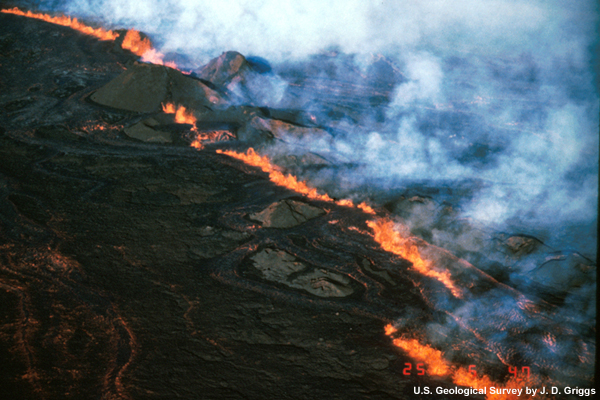
Indeed, the one that created the Siberian Traps lasted for millions of years and is thought to of helped with the Permian extinction event that led to the extinction of over 95% of life on Earth. It's known as When The Earth Almost Died. That happened over 250 million years ago, and it took tens of millions of years for the Earth to recover from.
What if this type of even happens much more often on other planets? It would certainly hamper life on that planet.
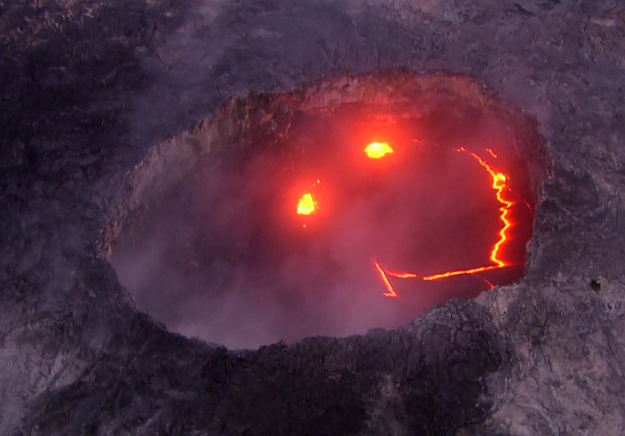

The Sun Is Out To Get Us! ZAP!
In part 1 of the Rare Earth Hypothesis, I mentioned that having a stable star, or one that tends to be quiet like our sun is beneficial for planets trying to develop life and intelligent life developing civilization.
We have not really seen where major solar flares or CMEs could make life go extinct (unless you're on a planet with no magnetic field to protect it) here on Earth.
However, we have seen what it can do with electrical and electronic equipment. It can and could be something devastating, damaging it so badly that it takes many years to recover from.
The solar storm of 1859 also known as The Carrington Event, was a small sample of what a planet's sun can do in that way. A CME that hit the Earth then generated a very large geomagnetic solar storm here on Earth, which caused telegraph systems all over the world to fail.
If another storm like that were to happen today, it would cause massive damage to our power infrastructure, and either damage or destroy sensitive electronic equipment.
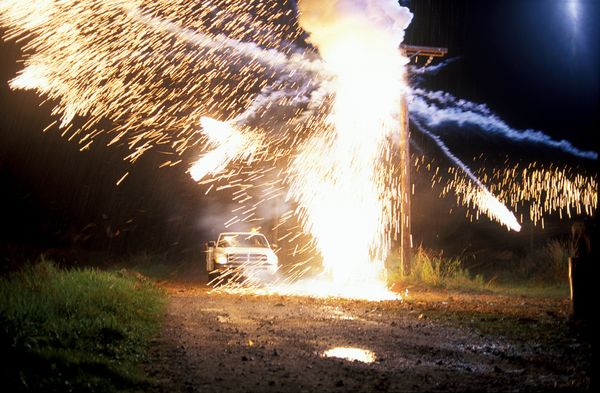
What if we have a planet that has developed intelligent tool using life on it, but is around a star that is much more active and gives off these CMEs much more often? Enough so that the planet in orbit around it gets struck with these devastating geomagnetic storms all the time? Going to be kind of hard to develop electrical devices when they are being damaged or destroyed by these. If nothing else, it would certainly slow the development down quite a bit.
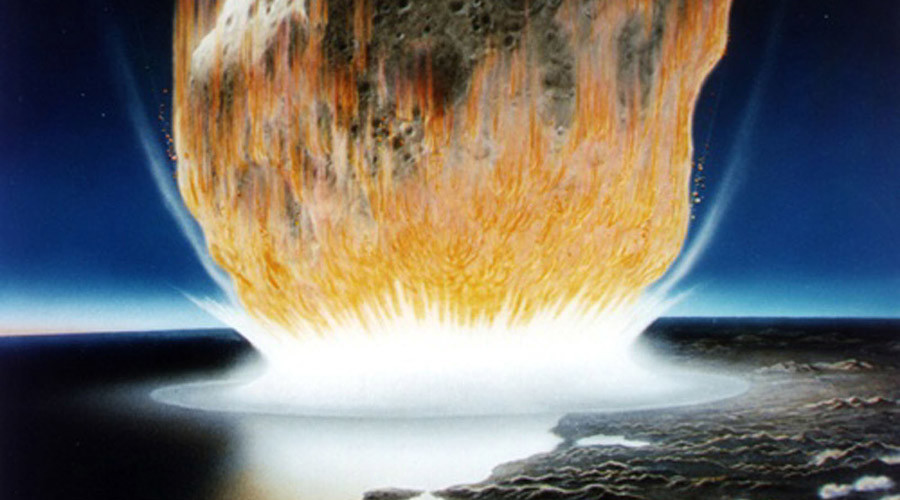
The Sky Is Falling!
Impact events on the large scale can be devastating to a planet. No doubt about that at all. Whether or not you believe that the impact event that happened 65 million years ago killed off the dinosaurs or not, it certainly did not help, and was a very bad day to be on Earth.
Large asteroids and comets striking a planet can have global reaching effect, causing extinction of species, and the end of civilization depending upon how advanced it is.
The good news for here on Earth is that events like these tend to have long periods in between them measured in millions of years or more.
What if other planets have these events happen more often? And I'm not talking about small rocks, but ones that measure up to tens of kilometers wide.
It can't be good for life on that planet, and even if you have a species that survives it each time and becomes intelligent, it's kind of hard to develop a civilization that's advanced when you constantly have large rocks falling out of the sky and devastating your planet.
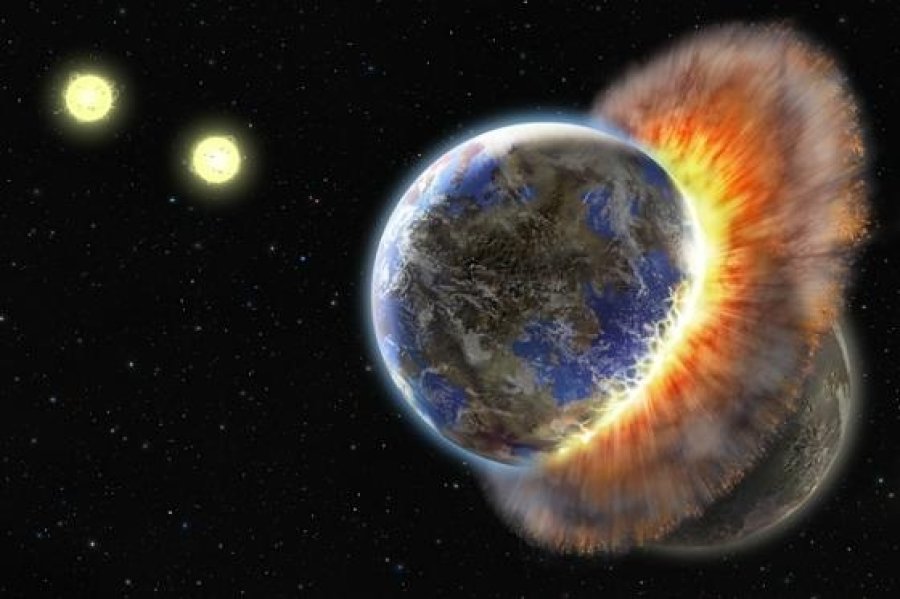
Nibiru! PlanetX Finally Showed Up!
While we've had quite a few threads here on ATS talking about Nibiru and many of us saying it doesn't exist, that doesn't mean that something like it exists in other solar systems.
Specifically having a rogue planet (a planet drifting through space that does not orbit a star), or a planet that has a very eccentric orbit that takes it way out of the system, only to have it come back and go through the inner part of the system where the green zone and in Earth like planet are.
If it's one that collides with your planet, that's all she wrote. Adios. Goodbye. No coming back from that, as it will either destroy your planet, or turn it completely molten.
If it doesn't have a chance of colliding with the planet, the gravitational effects of it simply coming close can be bad enough. It can change the orbits of other planets within that system, making their orbits more eccentric.....meaning that a planet that orbited it's sun in the green zone, may now not always stay in the green zone.
That would make it quite hard for life on that planet.
Or, it may even cause the planet to either spiral into it's sun or be flung out of the system. Not a good thing.
For those who have the itch, here's a video that simulates a Ceres sized object hitting the Earth. Very terrifying....and relaxing if you like Pink Floyd...
Cont. On Next Page.
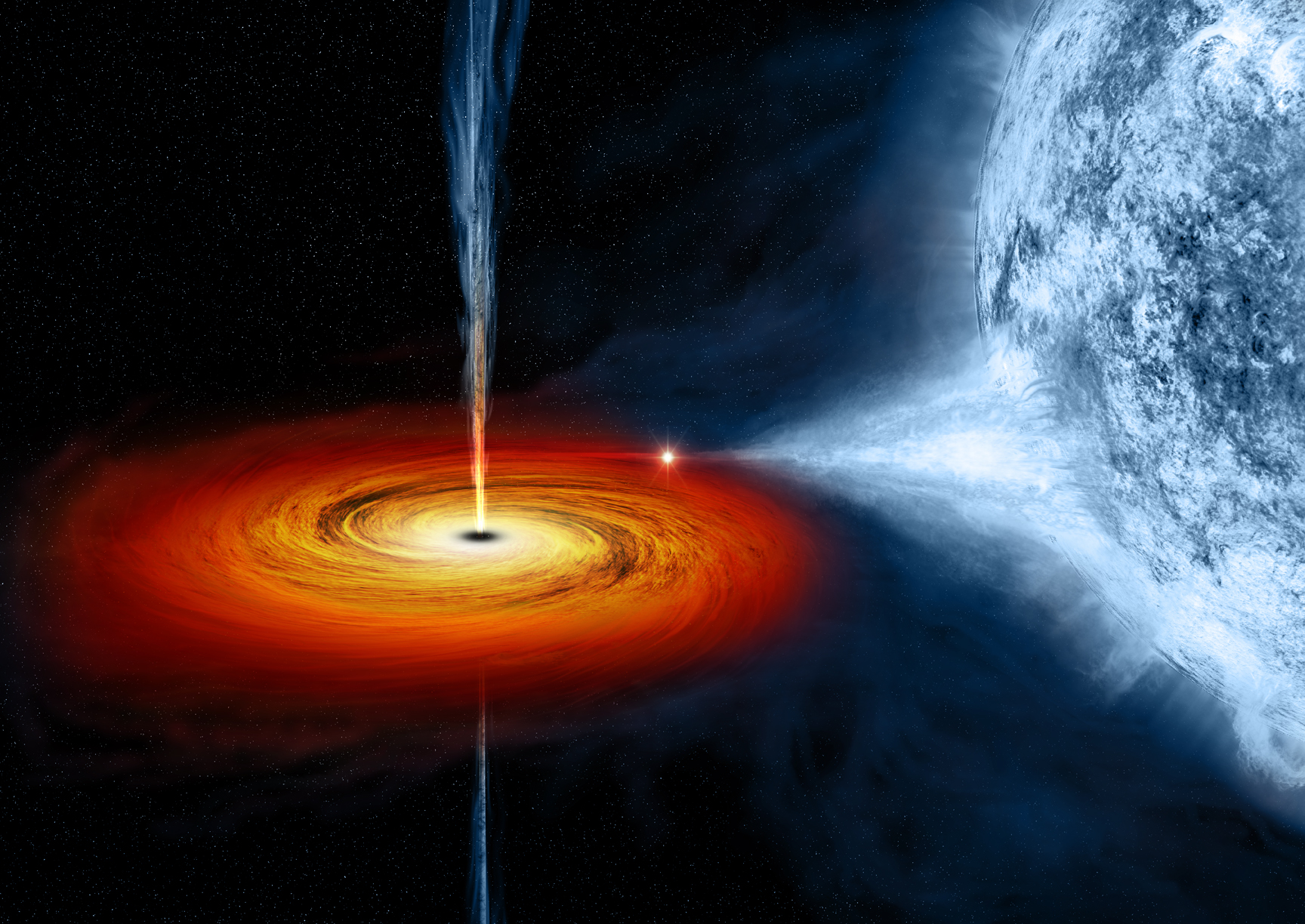
Black Holes - NOM NOM NOM NOM -......burp!
When it comes to Black Holes, we normally have 3 types we talk about:
Massive Black Holes that we normally find at the center of galaxies having billions of solar masses.
Stellar sized Black Holes that are normally the product of a super giant star going super nova.
Quantum sized Black Holes, that are on the sub-atomic scale.
We're not too worried about the massive ones as they tend to stay at the center of a galaxy. Likewise, we don't really need to be concerned about black holes on the sub-atomic level since their lifespan tend to be very short.
Stellar sized black holes on the other hand could be a problem.
Everything in the galaxy is moving. Most of it is orbiting around the center of the galaxy. Indeed, our sun orbits once around the galaxy every 250 million years.
But not everything is moving at the same speed. It's quite possible for a star to catch up to a slower moving stellar sized black hole, and vice versa.
That would be a very bad thing for that star and it's planets. At the very least, if you got just a little too close, it could dramatically affect the orbits of the planets around the star.
At the worst: it comes into the star system and acts like a giant vacuum cleaner, pretty much destroying all the planets and the star itself.
If you have a very advanced intelligent species in that system, they may be able to save themselves if they have interstellar travel and can leave the system before the black hole arrives.
If they are only as advanced as us...or less......then it sucks to be you.
Get it? "Sucks"? "Black Holes"?
Right, right, don't quit my day job........
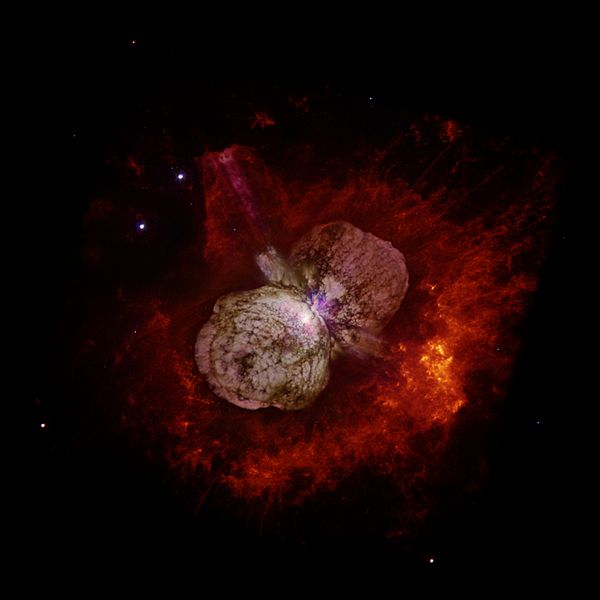
Star Go BOOM
About 4 years ago, I made a thread about Death Stars.
Specifically I was talking about Wolf-Rayet stars and how dangerous they are.
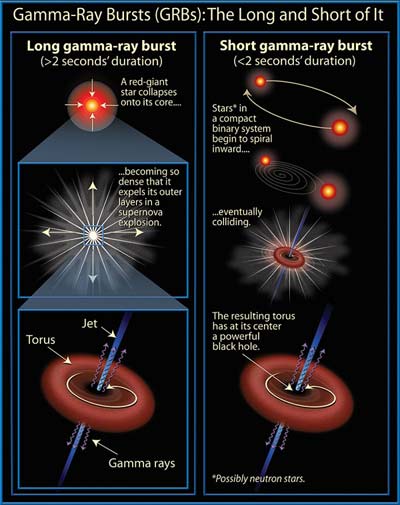
Having a star that is near you go super nova is bad. Very bad. When stars explode, they do so on a titanic level that is hard for us to really conceive. In that moment that star can out shine the galaxy it is in made up of hundreds of billions of stars.
The good news is there are not too many stars like that near enough to our planet that we have to worry. For most, we'll just get a very impressive light show. Betelgeuse is one good example of this, a star that is going to go super nova soon, but is far enough away that it won't hurt us.
On the other hand, that might not be true for a other planets out there that have intelligent alien species on it. Again: if they are advanced enough to have interstellar travel, they can save themselves. If they are only as advanced as us right now or less so, then they could find themselves doomed.
So there you have it. Just a few examples of how the universe is not exactly a nice and peaceful place to be in. Can you think of other things lurking out there in space waiting to snuff life out?
The next thread will deal with more home grown doom. Doomsday caused by intelligence itself. We do love our doom porn here on ATS, and I know many of you out there have talked about different ways we can or could snuff ourselves out. We'll talk about that in the next thread.

a reply to: eriktheawful
Excellent presentation again. There are even more threats to intelligent civilization depending on atmosphere and other factors.
All things considered, our cozy little wet rock is a very special and apparently rare place for intelligent life to form and thrive.
Still does not mean this has not been repeated many times over in the Universe, or maybe even an infinite number of times in an infinite Universe. Then factor in a possible Multiverse and other potential theories.
Keep these threads coming! S&F of course, and hopefully another mod is throwing some well deserve points your way.
Excellent presentation again. There are even more threats to intelligent civilization depending on atmosphere and other factors.
All things considered, our cozy little wet rock is a very special and apparently rare place for intelligent life to form and thrive.
Still does not mean this has not been repeated many times over in the Universe, or maybe even an infinite number of times in an infinite Universe. Then factor in a possible Multiverse and other potential theories.
Keep these threads coming! S&F of course, and hopefully another mod is throwing some well deserve points your way.
edit on 26-7-2017 by
Illumimasontruth because: Typo
a reply to: Illumimasontruth
Though it's off topic:
Once we become staff, we no longer get applause and points.
But that's cool because we get PMs from each other....sometimes....
Though it's off topic:
Once we become staff, we no longer get applause and points.
But that's cool because we get PMs from each other....sometimes....
Yep there is a lot out there to get you,
None of us are getting out of here alive..........
RA
None of us are getting out of here alive..........
RA
a reply to: eriktheawful
Thanks, these threads have been great!
It's tough waiting for the next!
Thanks again.
Thanks, these threads have been great!
It's tough waiting for the next!
Thanks again.
Death Star approaching!!!
Thank you Erik the awful. This is why I joined here back when 2012 was on the horizon. Myans, Aliens, and certain death from space.
If I knew what I was doing, creating threads like this is where I venture. But I lack the skills of inserting video, links, photos, and other relevant material.
Looking forward to the death and doom on a local level thread.
Thank you Erik the awful. This is why I joined here back when 2012 was on the horizon. Myans, Aliens, and certain death from space.
If I knew what I was doing, creating threads like this is where I venture. But I lack the skills of inserting video, links, photos, and other relevant material.
Looking forward to the death and doom on a local level thread.
a reply to: eriktheawful
Ummm...I'm a stargazer...always have been...should have gone into astronomy...shoulda woulda coulda...
I was just staring up at the stars the other night pondering about how the universe has it in for me/us...all while feeling this intense love and awe for all those places I'll never set foot on...all those worlds I'll only visit in imagination...
The conclusion to my thought train was that the universe is a violent yet majestic place that no amount of yearning on my part was ever going to evoke a like response...but that was alright...
I may in my small way look up and dream that something...some other one...might look down or up from wherever they might or might not be...and have a semi like thought that never meeting...never seeing or speaking to...that other someone or something cared...and even wished them well...
But your right...in the end when all the thinking about falls prey to realism...when all that useless emoting and anthropomorphic projecting subsides...thought turns to reality and reality dictates that this apex predator might just as well have just as little concern as the universe...might as well stop wasting energy dreaming about all those what-ifs...
Nah...what's the fun in that...
YouSir
Ummm...I'm a stargazer...always have been...should have gone into astronomy...shoulda woulda coulda...
I was just staring up at the stars the other night pondering about how the universe has it in for me/us...all while feeling this intense love and awe for all those places I'll never set foot on...all those worlds I'll only visit in imagination...
The conclusion to my thought train was that the universe is a violent yet majestic place that no amount of yearning on my part was ever going to evoke a like response...but that was alright...
I may in my small way look up and dream that something...some other one...might look down or up from wherever they might or might not be...and have a semi like thought that never meeting...never seeing or speaking to...that other someone or something cared...and even wished them well...
But your right...in the end when all the thinking about falls prey to realism...when all that useless emoting and anthropomorphic projecting subsides...thought turns to reality and reality dictates that this apex predator might just as well have just as little concern as the universe...might as well stop wasting energy dreaming about all those what-ifs...
Nah...what's the fun in that...
YouSir
Although not as common as some of the other already listed phenomena, a gamma-ray burst would be catastrophic to a planet if it was pointed in just
the right direction.
Gamma-ray Burst
EDIT: I totally missed the section on Wolf-Rayet stars somehow, disregard.
Gamma-ray Burst
edit on 26-7-2017 by WHWIV because: (no reason given)
EDIT: I totally missed the section on Wolf-Rayet stars somehow, disregard.
edit on 26-7-2017 by WHWIV because: (no reason given)
originally posted by: eriktheawful
a reply to: Illumimasontruth
Though it's off topic:
Once we become staff, we no longer get applause and points.
But that's cool because we get PMs from each other....sometimes....
Marked for thread drift...
Just kidding I am not a mod anymore but I gave you a star and flag just cause I like doom & gloom Wednesday!
a reply to: eriktheawful
Great thread!
The Carrington event is very likely to happen again, it's just a matter of time. Some deaths will likely result next time but not mass extinction, however most stars are not like our sun, they are smaller and many have been found to give off more lethal bursts of radiation than our sun. Couple that with the fact that the habitable zone of a planet around such a star is closer to the star and that means the bombardment from the solar outburst is even more lethal due to the close range.
And some of these could kill all of us like the Gamma Ray burst if we get unlucky, but fortunately none of these scenarios even made the top of the list of what is most likely to cause our extinction by 2100 (19% chance of that):
en.wikipedia.org...
Risk -- Estimated probability for human extinction before 2100 (2008 expert survey)
Overall probability -- 19%
Molecular nanotechnology weapons -- 5%
Superintelligent AI -- 5%
Non-nuclear wars -- 4%
Engineered pandemic -- 2%
Nuclear wars -- 1%
...
Anyway we need to colonize another planet and eventually another solar system so if an extinction level event occurs, humans won't be wiped out completely like the dinosaurs were. People say we shouldn't be spending money going to Mars when we have problems right here at home, but one of those problems is facing extinction, that's a pretty big incentive to get some colonies going on Mars, to me at least and I hope to everybody interested in preserving the human race.
And yes of course all of these could have relevance to the Fermi Paradox as you say, since they could pose problems for many civilizations, not just ours!
Great thread!
The Carrington event is very likely to happen again, it's just a matter of time. Some deaths will likely result next time but not mass extinction, however most stars are not like our sun, they are smaller and many have been found to give off more lethal bursts of radiation than our sun. Couple that with the fact that the habitable zone of a planet around such a star is closer to the star and that means the bombardment from the solar outburst is even more lethal due to the close range.
And some of these could kill all of us like the Gamma Ray burst if we get unlucky, but fortunately none of these scenarios even made the top of the list of what is most likely to cause our extinction by 2100 (19% chance of that):
en.wikipedia.org...
Risk -- Estimated probability for human extinction before 2100 (2008 expert survey)
Overall probability -- 19%
Molecular nanotechnology weapons -- 5%
Superintelligent AI -- 5%
Non-nuclear wars -- 4%
Engineered pandemic -- 2%
Nuclear wars -- 1%
...
Anyway we need to colonize another planet and eventually another solar system so if an extinction level event occurs, humans won't be wiped out completely like the dinosaurs were. People say we shouldn't be spending money going to Mars when we have problems right here at home, but one of those problems is facing extinction, that's a pretty big incentive to get some colonies going on Mars, to me at least and I hope to everybody interested in preserving the human race.
And yes of course all of these could have relevance to the Fermi Paradox as you say, since they could pose problems for many civilizations, not just ours!
originally posted by: Arbitrageur
a reply to: eriktheawful
Great thread!
The Carrington event is very likely to happen again, it's just a matter of time. Some deaths will likely result next time but not mass extinction, however most stars are not like our sun, they are smaller and many have been found to give off more lethal bursts of radiation than our sun. Couple that with the fact that the habitable zone of a planet around such a star is closer to the star and that means the bombardment from the solar outburst is even more lethal due to the close range.
And some of these could kill all of us like the Gamma Ray burst if we get unlucky, but fortunately none of these scenarios even made the top of the list of what is most likely to cause our extinction by 2100 (19% chance of that):
en.wikipedia.org...
Risk -- Estimated probability for human extinction before 2100 (2008 expert survey)
Overall probability -- 19%
Molecular nanotechnology weapons -- 5%
Superintelligent AI -- 5%
Non-nuclear wars -- 4%
Engineered pandemic -- 2%
Nuclear wars -- 1%
...
Anyway we need to colonize another planet and eventually another solar system so if an extinction level event occurs, humans won't be wiped out completely like the dinosaurs were. People say we shouldn't be spending money going to Mars when we have problems right here at home, but one of those problems is facing extinction, that's a pretty big incentive to get some colonies going on Mars, to me at least and I hope to everybody interested in preserving the human race.
And yes of course all of these could have relevance to the Fermi Paradox as you say, since they could pose problems for many civilizations, not just ours!
We had one in 1989. That blew up the power grid in Canada and the East Coast.
The cool thing was that the NE Scotland got to see really cool aurora until 1am and get to listen to Norwegian FM radio stations the preceding afternoon.
The thing with the Carrington Event wasn't so much it destroying civilization or causing extinction, but rather it happening much too often, to where
any development of say like an electrical grid becomes impossible or just too hard to develop.
I don't know how possible that is.
In fact I forgot something: Earthquakes.
How about a world that shakes, rattles and rolls just a little too much, and with too much magnitude all the time. Seems like if your buildings keep getting knocked down and destroyed all the time (most likely killing your people in the process), you'd give up after a while.
Of course that might not stop development, but I think it would certainly slow it down.
Alien kid: Awwww! Our house got knocked down again!
Alien mom: Hush now. Go get your father, we're camping in tents again.
I don't know how possible that is.
In fact I forgot something: Earthquakes.
How about a world that shakes, rattles and rolls just a little too much, and with too much magnitude all the time. Seems like if your buildings keep getting knocked down and destroyed all the time (most likely killing your people in the process), you'd give up after a while.
Of course that might not stop development, but I think it would certainly slow it down.
Alien kid: Awwww! Our house got knocked down again!
Alien mom: Hush now. Go get your father, we're camping in tents again.
That was only a little more than a third (-640 nT) of the Carrington event (-1760nT per Lakhina et al., 2005). There are other lower estimates of the Carrington event, but since in that event aurorae could be seen all over the world, even close to the equator, I think the ~3x larger estimate is probably more likely to be true.
originally posted by: stormcell
We had one in 1989. That blew up the power grid in Canada and the East Coast.
The cool thing was that the NE Scotland got to see really cool aurora until 1am and get to listen to Norwegian FM radio stations the preceding afternoon.
We were fortunate in 1859 that we didn't have as much infrastructure as we do today that could be adversely affected.
It certainly sounds possible to me to have more frequent Carrington events, but I don't think it necessarily follows that grids have to be so susceptible to such events. For example if DC had won the AC/DC wars before we had grids, we may not have the grids we have today which are based on AC. DC distribution required sources much closer to the loads and those shorter lines are less susceptible to solar storms. In fact when I visited some suppliers in China they were telling me the grid there was so unreliable they ended operating on their own generators quite frequently, so I think this shows there are ways around such problems if they occurred with frequency, unlike black holes or gamma ray bursts which the civilization can't do much about.
originally posted by: eriktheawful
The thing with the Carrington Event wasn't so much it destroying civilization or causing extinction, but rather it happening much too often, to where any development of say like an electrical grid becomes impossible or just too hard to develop.
I don't know how possible that is.
Again as with the Carrington event, earthquakes might be a challenge, but even on Earth we see places where earthquakes are frequent like Japan use stronger building codes. A 9.0 Earthquake or even a 10.0 may be difficult to design for but not impossible as they are large but still finite events. I suppose the biggest problem would be cost, since making buildings capable of surviving 9.0s everywhere would cost a lot. Fortunately not everywhere on Earth needs such buildings. The nuclear plants in Japan actually held up pretty well to the 2011 earthquake, it was the tsunami one plant couldn't handle and again that was just a design fault. The better designed nuclear plant closer to the earthquake epicenter also survived the tsunami, but mega-tsunamis could be quite devastating. We could get one of those from an asteroid impact in the ocean and they could completely overwhelm any tsunami wall I can conceive of.
Alien mom: Hush now. Go get your father, we're camping in tents again.
What doesnt Kill us makes us stronger, so literally if this happens, any of it, So long as the entire race of humans isnt wiped away would we not
emerge stronger.?
What happens if say a huge event occurs and only 500 Million remain worldwide, would we in someways spare the earth and buy more time. Or just grow weaker and more savage?
What happens if say a huge event occurs and only 500 Million remain worldwide, would we in someways spare the earth and buy more time. Or just grow weaker and more savage?
a reply to: ChrisM101
There are a lot of "Depends" on that.
If such an event completely destroys infrastructure, we take several steps backwards technology wise.
If we have to spend all of our time after such an event surviving, we have again taken huge steps backwards.
If such an event were to pretty much reduce us back to being nothing more than Hunter / Gatherers, then we are basically starting our civilization all over again.
Some might think that's not a bad thing.
On the other hand, it means it will take us longer to get off this rock, where we all are, and are sitting ducks where another event will come along and finish the job.
There are a lot of "Depends" on that.
If such an event completely destroys infrastructure, we take several steps backwards technology wise.
If we have to spend all of our time after such an event surviving, we have again taken huge steps backwards.
If such an event were to pretty much reduce us back to being nothing more than Hunter / Gatherers, then we are basically starting our civilization all over again.
Some might think that's not a bad thing.
On the other hand, it means it will take us longer to get off this rock, where we all are, and are sitting ducks where another event will come along and finish the job.
We know of several super volcanoes here on Earth, with the one at Yosemite being one of the most well known. Indeed there have been many threads here on ATS talking about it, even just recently.
I know you meant "Yellowstone"! *gently pokes in the ribs*
The real super volcano that worries me the most is in Iceland.
The unpronounceable Eyjafjallajökull volcano is like the end point. The Katla rift which is a kilometers long rift linking several calderas together is the seem of two tectonic plates. The fault line links the two together. If that system goes then we may see a mass migration out of Europe or worse.
The volcano itself was the one that erupted in 2010 and closed airspace in northwest Europe for several days.
new topics
-
Elon Musk to Make Games Great Again - XAI_GAMES Announcement Incoming.
Video Games: 1 hours ago -
North Korea in Ukraine conflict???
World War Three: 1 hours ago -
Most Complex Backyard Rube Goldberg Machine You'll See All Day
General Chit Chat: 2 hours ago
top topics
-
Of course it was DEI
Dissecting Disinformation: 14 hours ago, 10 flags -
Most Complex Backyard Rube Goldberg Machine You'll See All Day
General Chit Chat: 2 hours ago, 4 flags -
2nd Day Thanksgiving!...(leftovers!!)
General Chit Chat: 16 hours ago, 3 flags -
North Korea in Ukraine conflict???
World War Three: 1 hours ago, 3 flags -
Elon Musk to Make Games Great Again - XAI_GAMES Announcement Incoming.
Video Games: 1 hours ago, 0 flags
active topics
-
I thought Trump was the existential threat?
World War Three • 132 • : fringeofthefringe -
Of course it was DEI
Dissecting Disinformation • 16 • : Flyingclaydisk -
North Korea in Ukraine conflict???
World War Three • 9 • : gortex -
Elon Musk to Make Games Great Again - XAI_GAMES Announcement Incoming.
Video Games • 1 • : hydr0cannibal -
Most Complex Backyard Rube Goldberg Machine You'll See All Day
General Chit Chat • 5 • : Flyingclaydisk -
Post A Funny (T&C Friendly) Pic Part IV: The LOL awakens!
General Chit Chat • 7851 • : underpass61 -
population madness
New World Order • 21 • : Xtrozero -
V.P. Kamala Harris releases a video and nobody understands why
US Political Madness • 103 • : Xtrozero -
Mass UAP events. DC. Machester Airport, UFOs over sub base in CT, Nuke bases.
Aliens and UFOs • 31 • : alldaylong -
Encouraging News Media to be MAGA-PAF Should Be a Top Priority for Trump Admin 2025-2029.
Education and Media • 83 • : fringeofthefringe
